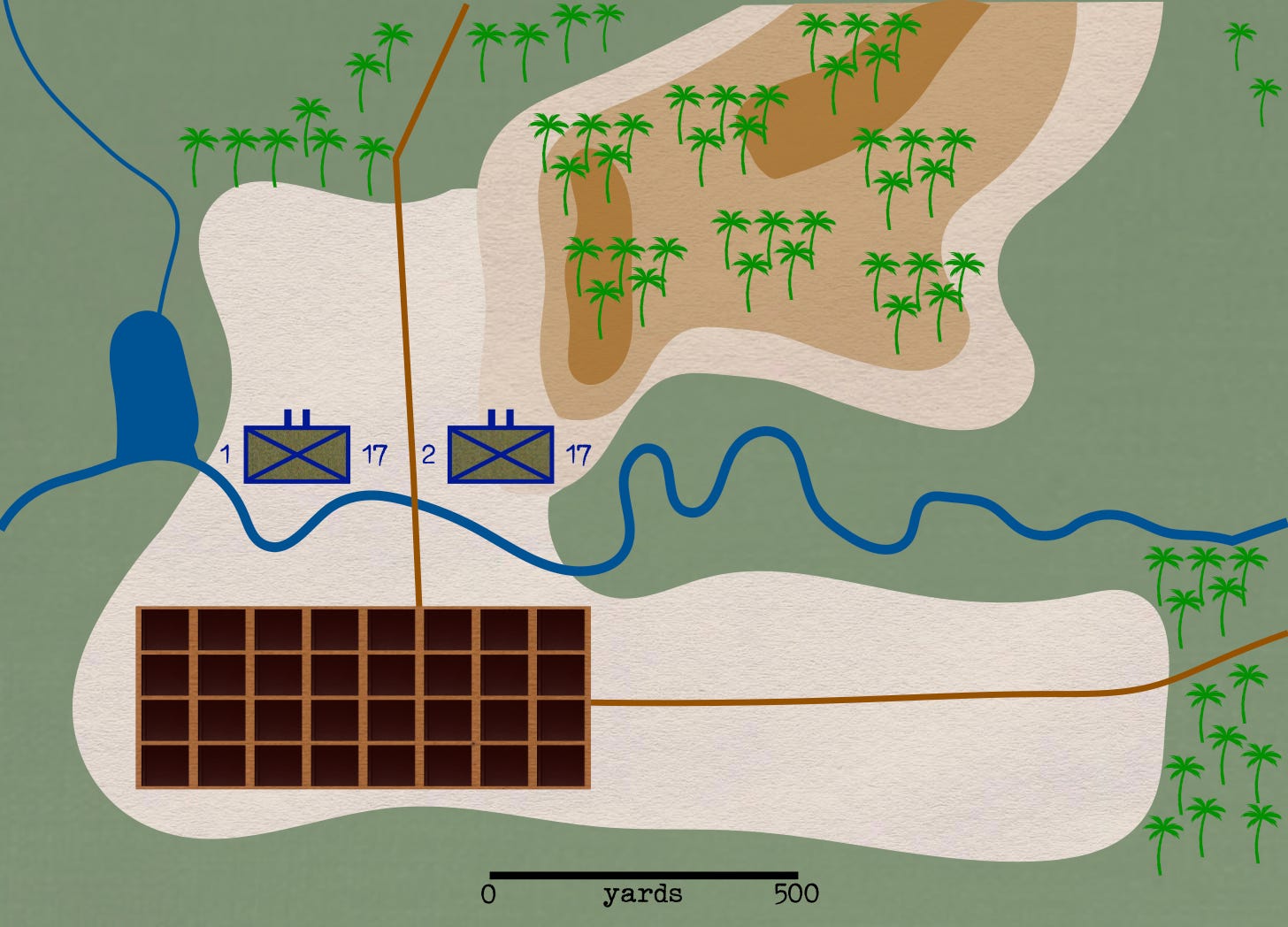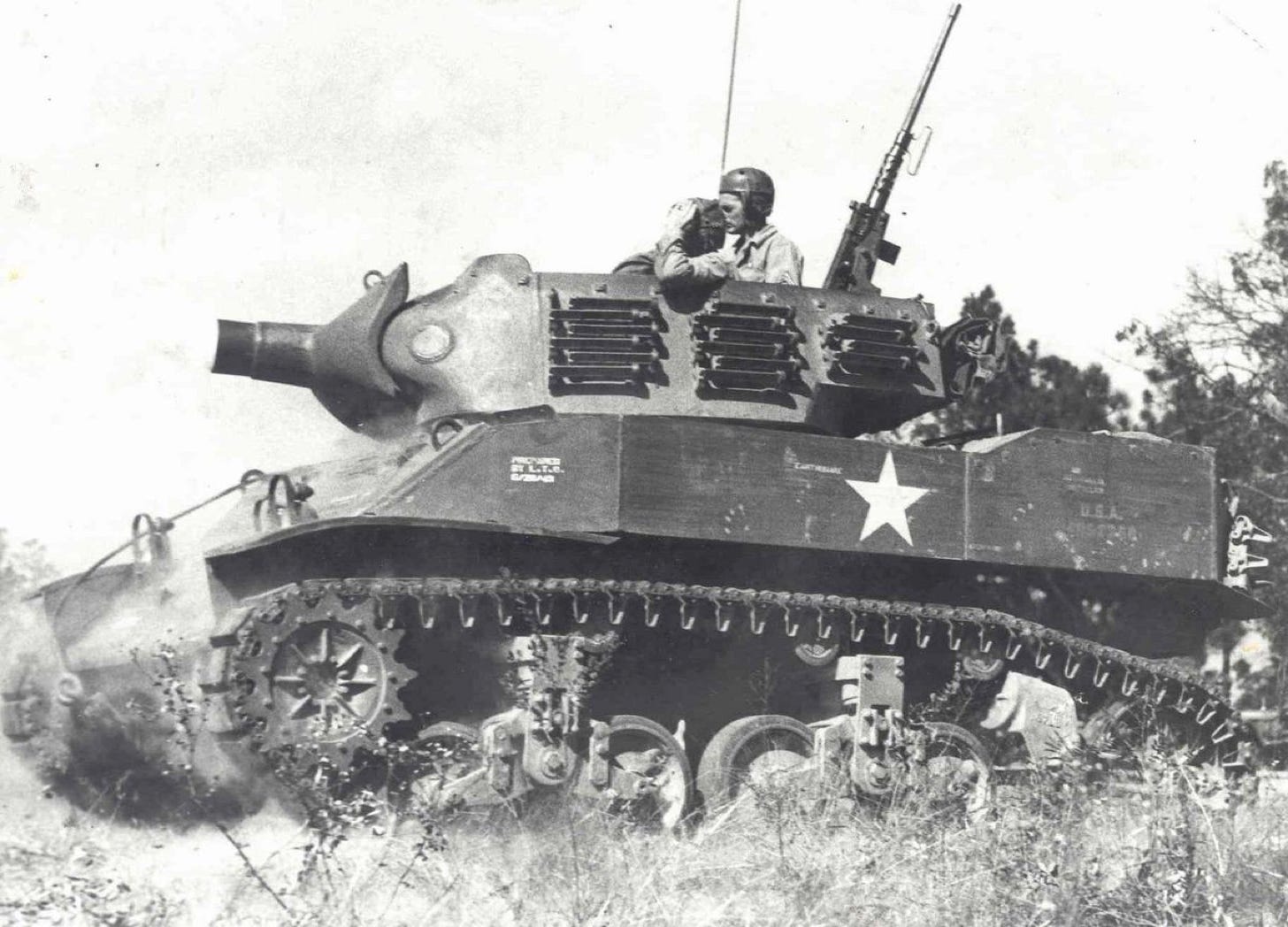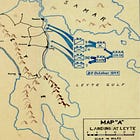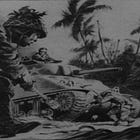CC/RCT 17 (V)
A decision-forcing case
This post continues a series of decision-forcing cases. With that in mind, I recommend that, before reading the paragraphs that follow, you read (or, better yet, work through) the first four posts in the sequence.
On 24 October 1944, each of your three cannon platoons is working with one of the infantry battalions of the 17th Infantry. The 3rd Platoon has been attached to the 3rd Battalion, which is performing a separate mission near the coast, some seven or eight miles away from your present position. The 1st and 2nd Platoons serve with RCT 17. In particular, each platoon is spending today under the operational control of one of the two infantry battalions of that task force.
Because of this arrangement, you decide that your duties lay in the realm of logistics. In particular, you believe that the most important thing that you can do is ensure a reliable supply of ammunition for the main armament of each of your four howitzers. (When fully loaded, each M8 howitzer motor carriage carries 46 rounds of 75mm ammunition.)
At the same time, you know that the strain of moving over difficult ground and firing a lot of fifteen-pound shells will take its toll on the equipment of your platoons. Thus, you look forward to the return of your maintenance team.
At 1220, the lead elements of RCT 17 reached the eastern outskirts of Burauen. As soon as they arrived, the self-propelled howitzers began to fire 75mm rounds into the buildings occupied by Japanese soldiers. When doing this, they preferred to fire shells fitted with time fuzes. (While shells fitted with impact fuzes would explode against the walls of houses, those sporting time fuzes were more likely to explode within such structures.)
By 1330, the attacking Americans had killed, captured, or evicted all Japanese soldiers from the thirty-two square blocks of Burauen. Soon thereafter, you arrange for your platoons to rendezvous with your two ammunition trucks and replace the rounds that they had fired.
While supervising this effort, your platoon commanders tell you that your howitzers have expended all but a handful of the 75mm rounds that they carried. Thus, ‘topping off’ all four of your vehicles will require all of the main gun ammunition that you have on hand. In the course of this conversation, one of your platoon commanders tells you that the recoil mechanism on one of his howitzers has been leaking fluid.
Despite sending several messages to the regimental S-4, you have yet to hear anything about, let alone see, your missing maintenance team.
Soon after the capture of Burauen, the commanding officer of RCT 17 orders his task force to resume its planned advance. Thus, while you visit with your two platoons, the two infantry battalions turn towards the north and begin to push forward. As before, the 1st Battalion advances along the left side of the road and the 2nd Battalion moves along its right edge.
What, Captain Jensen, do you do?

Please feel free to use the comments section to propose a solution to this problem. When doing so, please employ a first-person perspective. That is, rather than writing ‘Captain Jensen should’, please begin your response with ‘I would …’
If you are new to decision-forcing cases, you will find much of interest in the following article.









I would contact the Regimental S4 and inform him, politely but firmly, that I need my maintenance team back right now. Whatever they might be doing at the rear base is nowhere near as important as maintaining unit equipment. I would use the leaking counter recoil system to emphasize how important this is.
I would also request a resupply of 75mm rounds as my ammo section is zero balance. All of this would also go in my operations report to the Regimental CP.
If the S4 will not act, I would go to the Regimental CO and ask for help.